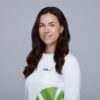Forus helped the first supermarkets in the Baltics obtain LEED certificates
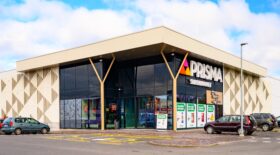
Certified buildings save money, increase staff efficiency, and decrease carbon emissions.
Well-being of your people and a better working environment.
Tenants require a green label – a common important requirement set to owners of real estate.
Compliance with LEED standards is becoming widespread when designing new buildings.
Sustainability and protecting the environment have become a part of the business culture of companies.
A green certificate could help get a bank loan with more favourable terms.
LEED is the most widely used international green building rating system. It provides an assurance from an independent third party (the United States Green Building Council) that a building is designed, constructed, and managed on a day-to-day basis in a way that is sustainable for people and the environment.
LEED certification means that the building in question is in a sustainable location, its indoor climate meets quality standards, and water, energy, and other materials are used with efficiency principles in mind.

Buildings consume large amounts of energy and resources. Buildings with green certificates save money, increase efficiency, reduce carbon emissions, and makes people feel better. That way, LEED certification also contributes directly to the achievement of ESG objectives.
The certificate is becoming a trusted indicator of quality for new developments as well as older buildings, which the tenants increasingly ask for when moving into a building.
With the help of Forus, over 30 buildings have received a LEED certificate. We are a member of your team when planning or renovating a building, evaluating the compliance of solutions with the requirements of LEED and making the entire process easy for you.
Buildings currently create nearly 40% of global greenhouse gases due to their energy consumption. Did you know that LEED certified buildings emit 34% less CO2 on average?
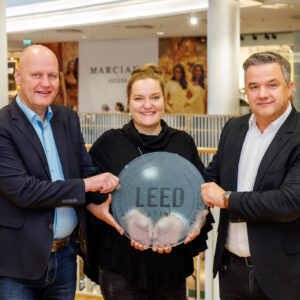
The carbon footprint of your building and energy expenses are considerably smaller.
Maximum energy savings are not the only focus. The interior climate of the building must be protected so that its inhabitants and users would feel comfortable there.
Green buildings are more attractive to tenants, who are also willing to pay a higher rent.
The certificate is an internationally recognised confirmation which is accompanied by extremely thorough calculations of the efficiency of the building compared to regular buildings.
Protecting the environment and remaining energy-efficient
The carbon footprint of your building and energy expenses are considerably smaller.
Great indoor climate
Maximum energy savings are not the only focus. The interior climate of the building must be protected so that its inhabitants and users would feel comfortable there.
Higher rental income and a competitive advantage
Green buildings are more attractive to tenants, who are also willing to pay a higher rent.
Measurable outcome and international credentials
The certificate is an internationally recognised confirmation which is accompanied by extremely thorough calculations of the efficiency of the building compared to regular buildings.
LEED is a comprehensive system.
The entire life cycle of a building under construction or one that is already finished is evaluated in five main categories:
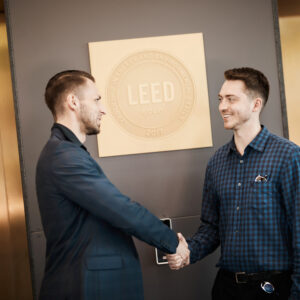
LEED certification has four different levels; the specific level awarded to an owner of a building is determined by the points earned. In order to earn a certificate, the building must receive at least 40 points.
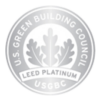
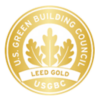
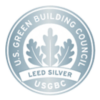
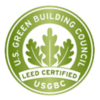
The first step in the certification process is a preliminary study, as a result of which, the optimum LEED level of the building is set for the project. After the preliminary study, terms of reference are prepared for the parties to the project (architect, designers, owner’s supervision, construction team, owner) and instructions are given on how to implement LEED requirements.
The LEED (Leadership on Energy and Environmental Design) certification is an internationally recognised green building rating system which was created by the United States Green Building Council in 1993. The certificates are issued by the USGBC (the United States Green Building Council).
The LEED rating process starts when the building design or planning begins. It ends with the completion of the building. The final documents can be prepared after the building is completed. In the case of a new commercial building, it would take about two or three years. The price depends on many factors as well as the building.
We at Forus prioritise your comfort as a client and bear the brunt of making sense of the requirements and complicated professional lingo (LEED requirements were created in the US). We have delved into the requirements and made the entire process as easy as possible for ourselves; we also explain everything to our clients in plain language. We have consulted on many buildings, prepare thoroughly, and have completed the entire process dozens of times. We know what works and what does not.
Almost all buildings can earn LEED credentials, including only a single floor. So far, the only type of building that Forus has not certified is a private residence.
No, a LEED certificate can be issued for older buildings as well as ones still in the design stage. We have several positive examples of older buildings, such as the Viru Keskus shopping centre, the Veerenni health centre, etc.
For completely new buildings, a quality label can be awarded without a term; however, buildings that are already completed and in use must be recertified every three years to determine whether progress is being made towards the objectives set to the building and towards sustainability.
An energy performance consultant of Forus is a member of the team in a building design or renovation project who assesses the LEED compliance of the solutions and guides the rest of the team in meeting them.
The consultant prepares the terms of reference, provides guidance, and coordinates and prepares the documentation required for the certificate. The consultant is also the person who communicates with international parties involved in the application process, such as USGBC (the US Green Building Council) and GBCI (Green Business Certification Inc.).
During the design phase, the consultant helps carry out an energy simulation to ensure that the systems operate according to the planned metrics. At the end of the certification process, i.e. after the completion of the building, the final document to be submitted to the consultant is the report of the integrated tests carried out by the builder and the owner’s supervision. This document is one of the prerequisites for LEED certification.
